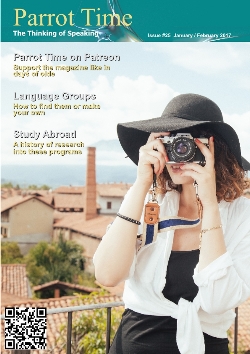A History of Research in Study Abroad

The earliest publications concerned with study abroad appeared between the World Wars and immediately after the Second World War, aiming to encourage more participation in programs abroad based on perceived benefits such as better professional prospect and increased linguistic competency. Thus the 1960s saw a growing interest in theories of cross-culture adaptation which fitted their understanding of the processes individuals experienced abroad. The W-curve hypothesis (Gullahorn & Gullahorn, 1963, an extension to Lysgaard 1955 U-curve hypothesis) for example described the stages of adaptation abroad: honeymoon, culture shock, initial adjustment, mental isolation and acceptance and integration. Such theories contributed to later works in educational contexts (Cormack, 1968; Selby & Woods, 1966) and in professional ones (Arnold, 1967). Despite evident progress made in SA research in the 1950s and 1960s, Spencer and Awe (1970), in their very comprehensive review of the research up to that point, called for greater consistency in research, based on issues they identified. These included few common variables in existing research, lack of research on students' objectives, lack of definitions and inadequate methodologies, a lack of drawing on more general literature when addressing questions of cross-cultural problems, an untested emphasis on language proficiency as the outcome of study abroad and the lack of experimental program designs for research purposes (p.1). It would be fair to say that the authors' call was not answered.  Indeed, research became quite experimental during the following decades, adding to the variety of research in study abroad but doing little for confirming previous findings. Thus researchers aimed to improve the quality of programs based on data collected (Bicknese, 1974), focused increasingly on individual experiences and the participants' own perception of their stay abroad (Adler, 1974; James, 1976), questioned notions like knowledge (Flack, 1976), or made autobiographical reports on language learning in a variety of locations (Schumann & Schumann, 1977). While other papers' novelty laid in their methodology or their perspective, Schumann and Schumann's (1977) work was more radically different, being autobiographical, diary based and concerned with the author's affective response to learning a foreign language in three different contexts. The authors kept in-depth diaries of their experiences and feelings of learning Arabic in North Africa, Persian at UCLA and Persian again in Iran. They related affective variables with progress in their language learning endeavours. Three behaviours of each author's language learning experience are related in the paper, giving account of the hopes, expectations and reactions to the learning contexts and teaching methodologies. The authors stressed the importance of personal variable factors as influencing their success in language learning. Using the pinball machine (can you get more 1970s?) as an analogy to language learning, the language learner, just like the ball in the machine, takes a path that no other ball would, despite given the exact same context. The personal variables the authors listed included motivation and anxiety as well as idiosyncratic behaviours such as nesting patterns and eavesdropping as a language leaning preference.  In addition to the above mentioned studies conducted by U.S. scholars, Willis and associates' (Willis, Doble, Sankaryya and Smithers, 1977, cited in Coleman, 1998, pp. 184–185) work investigated linguistic (speaking, listening comprehension) sociocultural knowledge and affective (attitude and anxiety) pre and post SA changes in 88 university undergraduates in either study or work placements in France and Germany during the academic years 1973/1974 and 1974/1975. The study found greater changes in those students who had been on work placement than those on study placements in conscientiousness, open-mindedness, and sense of adventure. In general, French and German hosts were seen in a more positive light, as well as English people. In terms of linguistic progress, despite students highlighting feeling that they had not been prepared enough in that respect for their placement abroad, most progressed. Only small increases were noticed in sociocultural knowledge. Correlations were found between positive attitudes and linguistic gains. Despite frequent statements that study abroad improves language skills and in spite of the Schumanns and Willlis and colleagues work, SA researchers did not take up the agenda of developing connections between a sojourn abroad and language learning in any systematic manner. Instead, until the 1980s, it has been said that there existed only two broad research agenda to the field of study abroad and international education: “those of a sociopsychological character, exemplified by studies pertaining to the cross-cultural consequences of studying abroad, and those dealing with how best to help international students to adapt and to succeed in an alien institution and cultural environment”(Cordaro & Lulat, 1984, p. 300). 1980s-1990s: Second language acquisition in SA – correlations  While the real impact of SLA on SA research began in the 1980s, Carroll's (1967) paper is frequently referenced to as seminal in providing a starting point for researchers, especially those comparing at home and abroad students' linguistic progress. Carroll's study reports on the results of foreign language proficiency tests administered to 2,782 students of French, German, Italian, Russian and Spanish in a variety of learning contexts. It showed, using statistical analysis, that “even a brief time spent abroad had a potent effect on a student's language skills” (p.131). Carroll's paper had a profound impact on SA research because it validated the importance of study abroad. Whereas previously samples had been too small and too homogeneous to allow generalisation of the benefits identified of studying abroad, Carroll's work demonstrated the efficiency of study abroad on language learning. Carroll's work unfortunately remained fairly unique in that Study Abroad research continued to explore questions related to changes in attitude and personal growth. During the 1980s bibliographies relating to Study Abroad showed research focused on the regulations surrounding inter-university agreements, statistical analysis of student mobility, post exchange pathways as well as a continuation of studies interested in cross-cultural identities (Altbach, Kelly, & Lulat, 1985; Baron & Bachmann, 1987; Cordaro & Lulat, 1984). What these bibliographies show is that Study Abroad remained by and large a field for sociologists, policy maker and program coordinators (universities and study abroad organisations). Nevertheless, a number of studies began to make connections between target language acquisition and study abroad contexts (DeKeyser, 1986; Möhle, 1984; Parr, 1988; Pica, 1983; Robertson, 1983). These papers reflected theories developed in the late 70s and early 80s about second language acquisition processes and particularly discussions around Krashen's monitor theory (see DeKeyser, 1986, pp. 3-9 for a discussion). Instruments were also created to test the theories and measure dimensions related to L2 oral production. The Oral Proficiency Interview (OPI) became a part of the American Council on the Teaching of Foreign Language test kit and was subsequently applied in study abroad research (Freed, 1990; Magnan, 1986; Milleret, 1991). Research using OPI was able to show students' linguistic improvements but was found to lack the ability to show finer progress, especially those made by students who participated in short stays.  The 90s were marked by an increased interest in second language acquisition in the context of study abroad. Some papers looked into speaking, writing, listening and reading skills (Davie, 1996; Meara, 1994; Opper, Teichler, & Carlson, 1990), others focused on specific competency, particularly oral (Yager, 1998). In addition to these works, a seminal volume edited by Freed (1995) collected a number of papers focused on language acquisition in study abroad. Divided into 4 sections, the volume covered the prediction of linguistic gains, comparative studies, sociolinguistic studies and diary studies, which showed a concern for the representation of a variety of study abroad contexts and language dimensions, but also for the methodological approaches. Special journal issues on linguistic gains in study abroad also appeared during this period. One was in the Journal of Asian Pacific Communication (1993, 4:4), which addressed questions of sociolinguistic competence (Marriot, 1993), linguistic inadequacies and self-representation (Spence-Brown, 1993), and communication in the homestay environment (Hashimoto, 1993). The newly created Frontiers The Interdisciplinary Journal of Study Abroad (1998, Volume IV), covered questions of methodology (Huebner, 1998), student perspectives (Pellegrino Aveni, 1998), sociolinguistics (Regan, 1998), literacy (Kline, 1998) and the European study abroad context (Coleman, 1998). Towards the end of the 1990s two realisations took place: that the objective measurement of linguistic gains may not be possible, particularly if language is seen as unitary, and that trends based on statistical analysis did not represent the reality of individuals' experiences.  Scholars recognised that students underwent many changes through exposure to a different culture but had, until recently conceptualised the learning context as an independent factor influencing an objectively measurable improvement. The paradigm shift sweeping through the entire filed of applied linguistics adopted the notion that the person, the context and the learning development were connected dynamically. The consequences were that both study abroad context and languages were further analysed into discrete components. |
| A History of Research in Study Abroad | ||||
| Writer: | Olivier Elzingre | |||
| Images: | ||||
| ||||
| Sources: | ||||
| ||||
All images are Copyright - CC BY-SA (Creative Commons Share Alike) by their respective owners, except for Petey, which is Public Domain (PD) or unless otherwise noted.
comments powered by Disqus

















